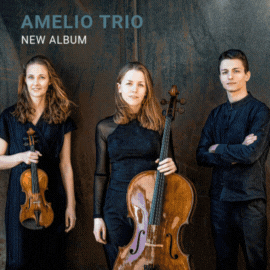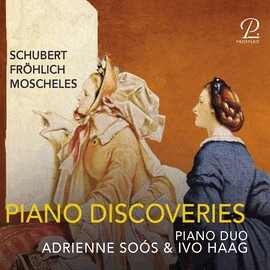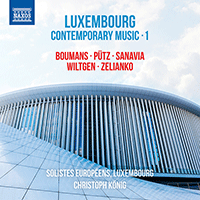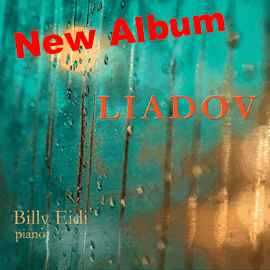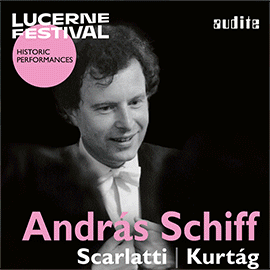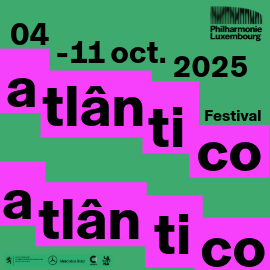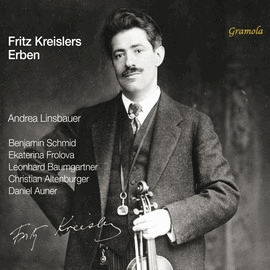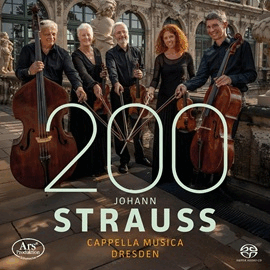 Luxembourg Contemporary Music Vol.1; Ivan Boumans: Meiosis; Marco Pütz: Moods; Jeannot Sanavia: Hélice; Tatsiana Zelianko: Sonata delle Farfalle; Roland Wiltgen: Orbital Resonances; Solistes Européens Luxembourg, Christoph König; 1 CD Naxos 8.579059; Aufnahmen 2012-2018, Veröffentlichung 12/03/2021 (71') – Rezension von Remy Franck, Uwe Krusch & Alain Steffen
Luxembourg Contemporary Music Vol.1; Ivan Boumans: Meiosis; Marco Pütz: Moods; Jeannot Sanavia: Hélice; Tatsiana Zelianko: Sonata delle Farfalle; Roland Wiltgen: Orbital Resonances; Solistes Européens Luxembourg, Christoph König; 1 CD Naxos 8.579059; Aufnahmen 2012-2018, Veröffentlichung 12/03/2021 (71') – Rezension von Remy Franck, Uwe Krusch & Alain Steffen
Diese CD ist die erste eine Serie, die Naxos zeitgenössischer Luxemburger Musik widmet. Die erste Folge enthält einige Aufnahmen von Werken, die wir bereits einzeln besprochen haben, und diese Texte werden für diese Neuveröffentlichung übernommen.
(Remy Franck) – « Wir haben zu oft in den vergangenen Jahrzehnten in der Programmierung von neuer Musik politische Korrektheit und Anbiederung an selbst ernannte Hohepriester der Moderne erlebt statt Überzeugung, Feigenblätter statt Neugierde. Dies hat zu oft Kreativität eingeengt, ja oft abgewürgt », sagte Franz Welser-Möst in einer Rede zum 200. Geburtstag der Gesellschaft der Musikfreunde in Wien. Der junge luxemburgisch-spanische Komponist Ivan Boumans gehört nicht in die Kategorie der Hohepriester, und Feigenblätter benutzt er schon gar keine. Dafür ist sein Stück Meosis zu bunt und originell, zu rhetorisch-direkt, ein Musikfilm von verblüffender dramatischer Spannweite, geschickt aufgebaut und prächtig orchestriert.
Wenn eine neue Komposition auf Anhieb einen bleibenden Eindruck vermittelt, dann ist dem Komponisten schon ein wichtiger Schritt gelungen. Und wenn dieser bleibende Eindruck zudem noch ein positiver ist, dann kann man von einem richtigen Erfolg sprechen. Und Moods von Marco Pütz ist ein solcher Erfolg. Es hat eine klare Struktur, es ist eminent gut orchestriert und, wie der Titel schon ankündigt, sehr stimmungsvoll. Man muss einfach nur hinhören, diese Stimmungen in sich aufnehmen und nachvollziehen, die Dramatik erleben, die aus der Musik spricht. Das ist ein gutes, ein großartiges Werk! Christoph König und die SEL-Musiker sind ganz offensichtlich sehr überzeugt von dem, was sie da spielen und gestalten die Musik opulent und ganz spannend.
Jeannot Sanavias Hélice entstand nach einer 1937 entstanden Wandmalerei von Sonia Delaunay-Terk, in deren Mittelpunkt ein Propeller in einem Kreis
aus verschiedenen Farben steht. Aber auch der Motor und das Armaturenbrett eines Flugzeugs sind zu sehen. Das hat Sanavia zu einer dynamischen und bewegungsreichen, gleichzeitig aber auch farbig-stimmungsvollen und rundum wirklich gut gemachten Tondichtung inspiriert, die unmittelbar zugänglich und effektvoll ist.
Tatsiana Zeliankos Sonata delle Farfalle (Schmetterlingssonate) hat vier Sätze und wird von der Komponistin als Seelenwandlung angekündigt, « so wie bei einem Schmetterling, der mit seinen letzten flatternden Flügeln langsam aufhört zu wirbeln, dies zur Linderung und lebendigen Emanation seiner Wiedergeburt. »
Ein düsterer erster Satz führt zu einem ‘flatternden’ Andantino. Das schmerzlich bohrende Adagio enthält immer wieder Hoffnungsschimmer und führt zum rhythmisch turbulenten Finalsatz. Eine sicherlich interessante Komposition, die, wie alle anderen, brillant interpretiert wird von den Solistes Européens Luxembourg unter dem Chefdirigenten Christoph König.
(Alain Steffen) – Roland Wiltgens Werk Orbital Resonances bietet alles, was man sich von guter zeitgenössischer Musik erwartet: tolle Klangspielereien, Innenspannung, Dynamik, orchestraler Farbenreichtum und ein exaktes Timing sowie eine wohl ausbalancierte Struktur.
(Uwe Krusch) -Wiltgen geht einem metrischen Aspekt auf die Spur. In der Himmelsmechanik wird als Orbitalresonanz die Beziehung meist zweier Himmelskörper zueinander bezeichnet, die auf ihren Kreis- oder Ellipsenbahnen einen regelmäßigen, periodischen Einfluss auf die Schwerkraft des jeweils anderen ausüben, normalerweise, weil ihre Umlaufzeiten durch ein Verhältnis kleiner Ganzzahlen miteinander verbunden sind. Wiltgen stellt die wiederholte Annäherung und Abstoßung beispielsweise einer Sonde an einen anderen Himmelskörper dar, bis es irgendwann endgültig zu einer Entfernung kommt.
Die ‘Orbitalresonanzen’ entfalten in gut zwölf Minuten moderat moderne Klangerlebnisse. Während am Beginn beim Zerren der beiden Himmelskörper miteinander auch harsche Dissonanzen ertönen, werden die Bahnen dann in ruhigere Orbitale sortiert, so dass die Entwicklung nicht mehr auf Kollisionskurs zielt. Während die Streicher vor allem mit perkussionistischen und rhythmischen Aufgaben betraut sind, dürfen die Bläser sich mit prominenten Äußerungen hervortun.
This CD is the first of a series dedicated by Naxos to contemporary Luxembourg music. The first installment contains some recordings that we have already reviewed individually, and these texts are adopted for this new release.
(Remy Franck) – » In the programming of new music in the past decades, we have seen too often political correctness and pandering to self-proclaimed high priests of modernism instead of conviction, fig leaves instead of curiosity. This has too often constricted creativity, indeed often stifled it, » said Franz Welser-Möst in a speech marking the 200th anniversary of the Gesellschaft der Musikfreunde in Vienna. The young Luxembourgian-Spanish composer Ivan Boumans does not belong to the category of high priests, and he certainly does not use fig leaves. His piece Meosis is too colorful and original for that, too rhetorically direct, a musical film of astonishing dramatic span, skillfully constructed and magnificently orchestrated.
If a new composition makes a lasting impression right away, then the composer has already succeeded in taking an important step. And if this lasting impression is also a positive one, then one can speak of a real success. And Moods by Marco Pütz is such a success. It has a clear structure, it is eminently well orchestrated and, as the title already announces, very atmospheric. You just have to listen, absorb and comprehend these moods, experience the drama that speaks from the music. This is a good, a great work! Christoph König and the SEL musicians are clearly very convinced of what they are playing and create the music opulently and quite excitingly.
Jeannot Sanavia’s Hélice was based on a 1937 mural by Sonia Delaunay-Terk, centered on a propeller in a circle of different colors. But the engine and dashboard of an airplane can also be seen. This has inspired Sanavia to create a sound poem that is dynamic and full of movement, but at the same time colorful and atmospheric, and all around really well done, immediately accessible and effective.
Tatsiana Zelianko’s Sonata delle Farfalle (Butterfly Sonata) has four movements and is heralded by the composer as a transformation of the soul, « a musical metempsychosis in wing beats, so to speak, evolving from the butterfly’s peaceful last day, when it slowly ceases its fluttering dance in the air, to the joyful and revivifying emanation of its rebirth. From the dawn of its demise to its emancipation.
In this succession of applied movements, between death, the passionate prefiguration of future resurrection, and life, the prelude to inevitable death, oscillates and vacillates the maelstrom of melody. »
A somber first movement leads to a fluttering Andantino. The painfully probing Adagio contains nevertheless glimmers of hope and leads to the rhythmically turbulent final movement. A certainly interesting composition, brilliantly interpreted like all the others by the Solistes Européens Luxembourg under principal conductor Christoph König.
(Alain Steffen) – Roland Wiltgen’s work Orbital Resonances offers everything one expects from good contemporary music: great tonal effects, inner tension, dynamics, orchestral richness of color and exact timing as well as a well-balanced structure.
(Uwe Krusch) -Wiltgen goes after a metrical aspect. In celestial mechanics, orbital resonance is the relationship of usually two celestial bodies to each other that exert a regular, periodic influence on each other’s gravity in their circular or elliptical orbits, usually because their orbital periods are linked by a ratio of small integers. Wiltgen represents the repeated approach and repulsion of, say, a probe to another celestial body until, at some point, there is a final distance.
The Orbital Resonances unfold moderately modern sound experiences in a good twelve minutes. While at the beginning also harsh dissonances sound during the tugging of the two celestial bodies with each other, the orbits are then sorted into calmer orbitals, so that the development no longer aims at a collision course. While the strings are entrusted primarily with percussionistic and rhythmic tasks, the winds are allowed to distinguish themselves with prominent utterances.







